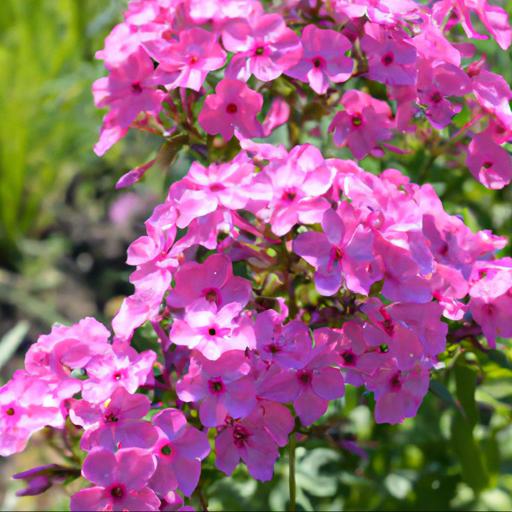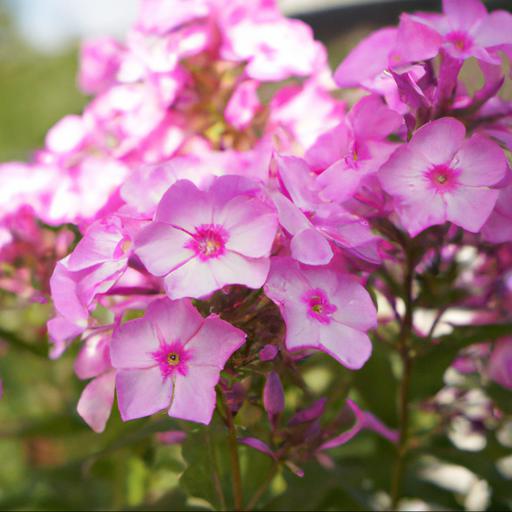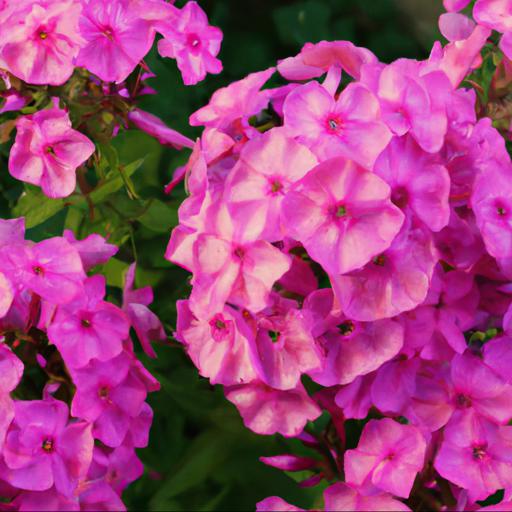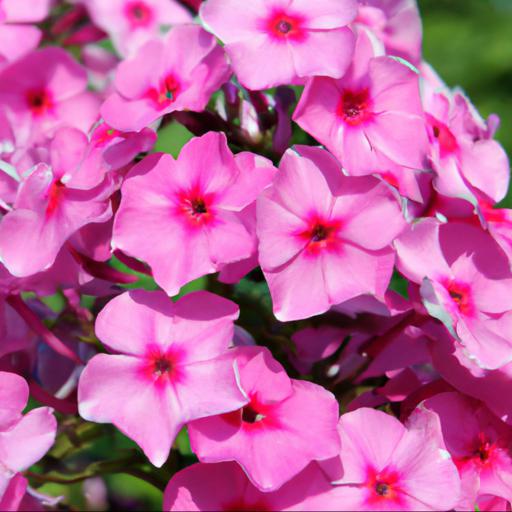Are you looking for a beautiful, low-maintenance flowering plant to add to your garden? Look no further than Phlox paniculata Miss Elie! This stunning perennial is known for its vibrant clusters of blooms in shades of pink and purple.
It’s easy to care for, drought tolerant, and deer resistant, making it an ideal choice for any garden. Its long-lasting blooms also make it a great choice for cut flowers.
With its eye-catching color and hardy nature, Phlox paniculata Miss Elie is sure to be a showstopper in your garden.
Growing and caring for phlox paniculata miss elie

:Growing and caring for Phlox paniculata miss elie is easy to do and it will reward you with beautiful blooms throughout the spring and summer months. To ensure your miss elie phlox stays healthy and vibrant, it’s important to understand the proper planting, maintenance and care that it requires.
Phlox paniculata miss elie is a flowering perennial that grows up to four feet tall. They are native to North America and thrive in warm, temperate climates with sunny exposures. This variety of phlox produces large clusters of bright purple, lavender and white tubular flowers.
Plant your miss elie phlox in well-draining, neutral soil with a pH of 0-
These plants prefer moist but not wet soil and will benefit from a layer of organic mulch which will help to keep the soil temperature cool and help to retain moisture. Prune your phlox in early spring to keep the plant healthy and promote new growth.
Divide your plant every three to four years to help ensure healthier blooms in the future. Maintaining your miss elie phlox is simple – regular watering, fertilizing and deadheading will ensure that your flowers remain lush and vibrant throughout the season. Water your phlox every one to two weeks during dry periods.
As the flowers begin to fade, be sure to remove them by pinching them off with your fingers or by cutting off the faded blooms with a pair of garden scissors. Fertilize your phlox in the spring before new growth appears with a 10-10-10 fertilizer to help promote strong, healthy blooms.
With each season you will find that with a few simple steps you can have your miss elie phlox blooming and looking its best. As with all plants, a little love and care will go a long way to ensure that your phlox remains healthy and vibrant throughout the year.
Benefits of phlox paniculata miss elie

When it comes to beautiful plants, Phlox paniculata Miss Elie is an undeniable standout. Native to North America, this eye-catching shrub boasts long-lasting white floral panicles that make it a stunning addition to any garden. Its delicate blooms and its light, sweet honey-like scent make this a highly desirable, show-stopping garden plant.
Not only is Phlox paniculata Miss Elie beautiful to look at and enjoy, it also provides some remarkable benefits for the gardener. For starters, the plant is tolerant of changing weather conditions, making it an ideal choice for those living in more temperamental climates.
Additionally, its ability to adapt quickly to swiftly changing soil pH levels makes it an ideal choice for gardeners who want to ensure their soil is maintained at an optimal range. But perhaps the most incredible thing about Phlox paniculata Miss Elie is its hardiness.
This tough yet graceful plant can withstand heavy rains and wind, making it a top choice for anyone looking to create an all-weather garden. Furthermore, because the plant grows quickly and can handle most soils, it makes for easy care and maintenance. In summary, Phlox paniculata Miss Elie is a gorgeous, hardy plant that offers gardeners in all climates the perfect combination of beauty and practicality.
With its charming blooms, hardiness, and simple maintenance requirements, this exquisite shrub is sure to make your garden look great year round.
Design ideas for phlox paniculata miss elie

As a garden expert in the UK, I can confidently say that Phlox paniculata Miss Elie is a guaranteed way to bring some color and beauty to any garden. With its eye-catching deep fuchsia blooms, this hardy perennial will transform your garden with a vibrant splash of color. It’s an ideal plant to have especially due to its low maintenance characteristics — it only requires occasional pruning to keep it flowering through the summer.
The foliage of Phlox paniculata Miss Elie is a deep green, adding a natural background to the dark fuchsia flowers. Its upright structure and bush-like form, along with the eye-catching bloom clusters, give it a sophisticated and mature look.
Planting En masses with other complementary colors is a great way to create a stunning display of beauty, and a great place to start is with white, pink and purple blooms. Phlox paniculata Miss Elie also has a wonderful fragrance, making it an ideal choice for borders along pathways or near seating areas. It’s also great for city gardens, as it is quite tolerant of urban pollution and will attract butterflies and birds, adding a further burst of life to your garden.
With minimal care and effort, you can create a captivating and luscious garden area with Phlox paniculata Miss Elie!
Troubleshooting common problems with phlox paniculata miss elie
Troubleshooting common problems with Phlox paniculata Miss Elie can be a difficult task, especially for novice gardeners. Fortunately, with some basic knowledge and troubleshooting steps, getting your Phlox paniculata Miss Elie looking its best can be made easy. Phlox paniculata Miss Elie is a summer-flowering perennial that is a great addition to any garden.
However, like any other plant in your garden, it is prone to suffering from diseases and pests. The most common problems that occur with this type of Phlox include aphids, leaf spot, downy mildew, and powdery mildew.
If your Phlox panicsulata Miss Elie is affected by leaf spot, downy mildew, or powdery mildew, your best bet is to get rid of affected foliage from your plant and treat the plant with a fungicidal spray. This should help improve the health of your plant and reduce the amount of affected foliage. If you find that your Phlox paniculata Miss Elie is suffering from aphids, you’ll want to try treating the plant with either an insecticidal soap or a pyrethrin-based insecticide.
Be sure to follow the directions on the label carefully, as this will help prevent the further spread of aphids. Remember, when it comes to tackling common problems with Phlox paniculata Miss Elie, prevention is always better than a cure.
Make sure that your plant is well-watered and nourished, and ensure that it is receiving the right amount of sunlight. Additionally, it is a good idea to practice proper plant hygiene by removing any dead or damaged leaves and flowers. Doing so can help to keep your Phlox paniculata Miss Elie healthy and looking its best.
Our video recommendation
Bottom Line
Phlox paniculata ‘Miss Elie’ is a stunning perennial flower that is great for adding color and texture to any garden. Its tall, upright stems are adorned with fragrant, pink-purple blooms that attract pollinators.
This hardy plant is easy to care for and requires minimal maintenance. It is tolerant of heat and drought, making it a great choice for gardeners in any region. With its long-lasting blooms, this eye-catching flower will add beauty to any garden for years to come.
FAQ
What are the common names for Phlox paniculata ‘Miss Elie’?
The common names for Phlox paniculata ‘Miss Elie’ are Garden Phlox, Summer Phlox, and Tall Phlox.
How tall does Phlox paniculata ‘Miss Elie’ grow?
Phlox paniculata ‘Miss Elie’ typically grows to a height of 2-3 feet.
What type of soil is best for growing Phlox paniculata ‘Miss Elie’?
Well-drained, fertile soil with a neutral pH is best for growing Phlox paniculata ‘Miss Elie’.
What type of climate is best for growing Phlox paniculata ‘Miss Elie’?
Phlox paniculata ‘Miss Elie’ is best grown in a temperate climate with plenty of sunshine and well-drained soil.
How often should Phlox paniculata ‘Miss Elie’ be watered?
Phlox paniculata ‘Miss Elie’ should be watered once a week, or when the soil is dry to the touch.
What type of pests or diseases are common for Phlox paniculata ‘Miss Elie’?
Common pests and diseases for Phlox paniculata ‘Miss Elie’ include powdery mildew, leaf spot, and spider mites.

